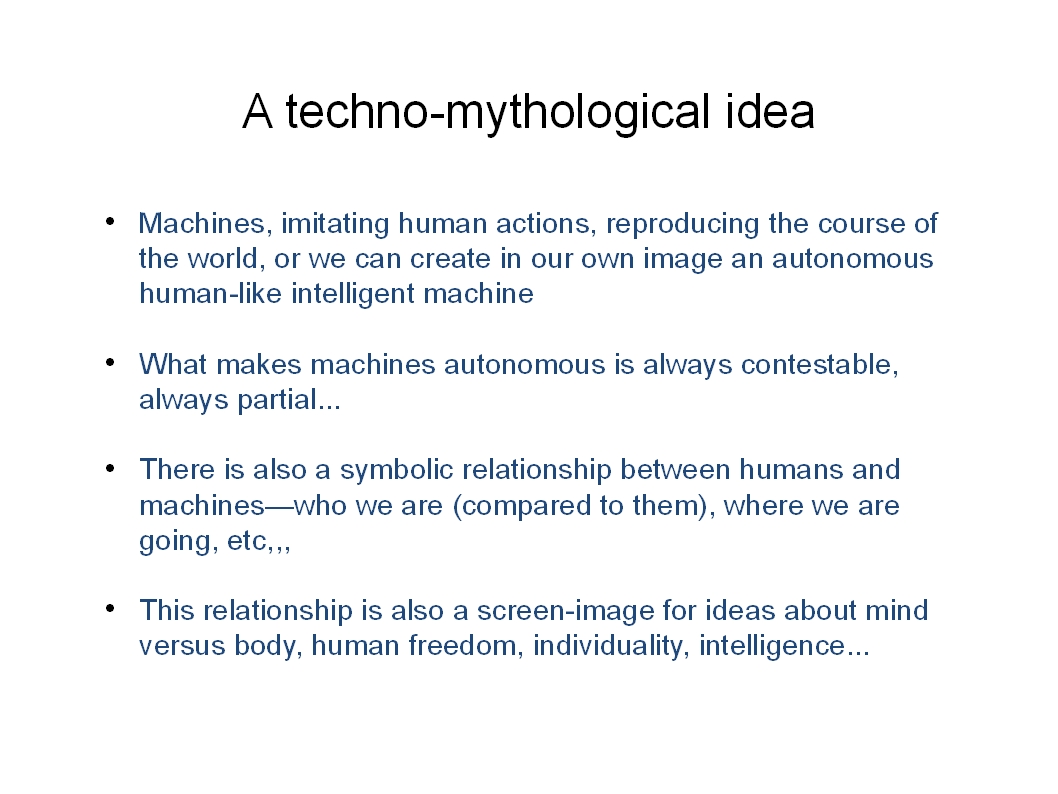An automaton is always a machine containing its own principles of motion, although, machines are not necessarily automata. Drawing on Beaune (1989), the autonomous machine can be described as a techno-mythological idea or a mechanical myth—an ancient dream which has only partially come true. We can design mechanisms that imitate human action and we continue to dream that a machine's autonomous functionalities can somehow reproduce the course of the world or that the future will see very human-like machines.
What makes machines autonomous however, is always contestable. Their autonomy is always partial, say, if we take human autonomy as a point of departure. Most ordinary machines have no mythical edge either—a sowing machine or a motorcycle. They are appropriated for purposes that express human power to control them for some purchase in the world. But there is a symbolic relationship to consider in this respect. The very existence of machines inspires us to think, creatively and artistically, about who we are compared to them, how we are made, what we want, where our societies are headed, and so on. And, the mythical edge of autonomous machines, in particular any human-like appearance, is precisely the contestability of their autonomy in reference to our own. The symbolic relationship here serves us to project our ideas about mind versus body, human freedom and individuality, intelligence, emotionality, or what we understand of the living world more generally.
